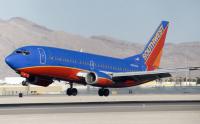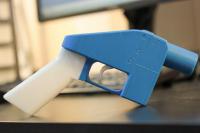-
Police say they lack powers to probe phone involvement in crashes
Four out of five collision investigators surveyed for the research indicated mobile phone involvement in non-fatal accidents was under-reported, with half agreeing the role of phones was even overlooked in fatal crashes. Police officers are worried they lack the right powers and resources properly to investigate whether a mobile phone was being used by a driver at the time of a crash, a new study has found.
-
-
Colombia plane crash: how can people survive deadly air disasters?
A plane crash in Colombia has killed 71 people including most of one of Brazil’s top football teams, leaving just six survivors. While the investigation may take some time to reveal the factors behind the accident, the distressingly high – but not total – number of fatalities raises the question of how some people are able to survive such a devastating disaster. When an accident occurs, what is it that determines that some passengers survive when many others on the same flight do not?
-
-
Cybersecurity to bolster safe transfer of hazardous liquids at ports
The U.S. Coast Guard (USCG) oversees approximately 800 waterfront facilities that, among other activities, transfer hazardous liquids between marine vessels and land-based pipelines, tanks or vehicles. These “maritime bulk liquid transfers” increasingly rely on computers to operate valves and pumps, monitor sensors, and perform many other vital safety and security functions. This makes the whole system more vulnerable to cybersecurity issues ranging from malware to human error, and is the reason behind a new voluntary cybersecurity guide for the industry.
-
-
Innovative technologies sought for aviation security
A £2 million competition to help find new ways to protect air passengers has been announced by the U.K. government’s Future Aviation Security Solutions (FASS) team. The Home Office and Department for Transport team have jointly launched a competition through the Center for Defense Enterprise (CDE) as part of its wider FASS program worth £25.5 million until 2021. Suppliers are being asked to develop truly innovative technologies, with a focus on people, baggage, and cargo security.
-
-
Bermuda Triangle mystery may have been solved
It is estimated that over the last 100 years, hundreds of ships, at least 75 planes, and thousands of lives have been lost art the Bermuda Triangle. A group of satellite meteorologists may have solved the mystery of the triangle: Hexagonal clouds, creating “air-bombs” with winds of up to 170mph, capable of plunging planes into the sea and flipping ships, are said to be behind the mysterious disappearances at sea.
-
-
Numbers count: Public interested in plane crashes only if death toll is 50 or higher
Data reveal which plane crashes the public is interested in and why. Researchers counted the number of page views and edits of Wikipedia articles about 1,500 plane crashes around the world to discover that a death toll of around fifty is the minimum threshold for predicting significant levels of public interest. The data also show that the amount of interest in the relevant articles accelerates in line with the numbers who died.
-
-
No GPS, no problem: Next-gen navigation
Researchers have developed a highly reliable and accurate navigation system that exploits existing environmental signals such as cellular and Wi-Fi, rather than the Global Positioning System (GPS). The technology can be used as a standalone alternative to GPS, or complement current GPS-based systems to enable highly reliable, consistent, and tamper-proof navigation. The technology could be used to develop navigation systems that meet the stringent requirements of fully autonomous vehicles, such as driverless cars and unmanned drones.
-
-
Southwest Airlines, police remove Muslim from plane for saying “inshallah”

Khairuldeen Makhzoomi, a 26-year-old Berkeley graduate, was removed from a Southwest Airline plane at Los Angeles International Airport in April this year — after another passenger overheard him speaking Arabic on his mobile phone. He was escorted off the plane by police officers, searched, and dogs sniffed his luggage. The Department of Transportation is investigating. “This is our home,” he said of the United States (he came here legally in 2010). “We don’t have another home. The experience [in April] was just unpleasant,” he said.
-
-
Cleaning concrete contaminated with chemicals
In March 1995, members of a Japanese cult released the deadly nerve agent sarin into the Tokyo subway system, killing a dozen people and injuring a thousand more. This leads to the question: What if a U.S. transportation hub was contaminated with a chemical agent? The hub might be shut down for weeks, which could have a substantial economic impact. Craig Tenney, a chemical engineer at Sandia National Laboratories, is looking for better ways to clean contaminated concrete to reduce that impact.
-
-
New inquiry into 2010 Smolensk plane crash suggests collusion between governments of Poland, Russia
A new Polish commission, set up to investigating anew the 2010 plane crash which killed President Lech Kaczyński and ninety-five others, has released its report, accusing the previous investigative commission, which did its work in 2011, of doctoring evidence and documents and manipulating facts. The 2011 commission attributed the crash to errors by the Polish pilots who tried to land the plane in dense fog. The new commission, appointed by Kaczyński’s twin brother, who now leads Poland’s nationalist government, hints that the crash may have been the result of a collusion between the Polish government at the time and Russia.
-
-
Freight airships may soon help Asian companies reach world markets
The rise of freight airships could go down like a lead balloon with traditional aircraft companies, but could also represent a new high for Asian companies seeking to exploit new ways to reach world markets. Researchers explain how the reinvented technology of airships has come apace in recent years and is a far cry from the trial and error methods and primitive materials used to build the giant Zeppelins of yesteryear.
-
-
Technical problems rather than operator errors cause most drone accidents
Research has found that technical problems rather than operator errors are behind the majority of drone accidents, leading to a call for further safeguards for the industry. One of the researchers said the findings illustrated the need for further airworthiness requirements for Remotely Piloted Aircraft Systems (RPAS), as well as the mandatory reporting of all accidents or incidents. “Understanding what happens to drones, even those that don’t cause damage to people or property, is essential to improve safety,” he said.
-
-
3-D printed plastic gun discovered at Nevada airport

Airport screening agents at Reno-Tahoe International Airport in Nevada last week confiscated a plastic handgun produced with a 3-D printer from a man’s carry-on luggage. Federal official said Wednesday this might have been the first time a 3D-made gun was discovered as a passenger was trying to bring it on board. Airport authorities said the white gun was loaded with five .22-caliber bullets, but that it was a replica that could not fire and.
-
-
Armed French police deployed on Channel ferries

Passenger ferries going between Britain and France are now being accompanied by armed sea patrols to protect them from jihadist attacks. In addition, marine gendarmes are now placed on ferries in the Channel and North Sea, as the two countries are in talks about allowing French security personnel togo on board ferries before the ferries leave English ports.
-
-
Can next-generation bomb ‘sniffing’ technology outdo dogs on explosives detection?
With each terrorist attack on another airport, train station, or other public space, the urgency to find new ways to detect bombs before they’re detonated ratchets up. What researchers have wanted to develop for a long time is a new chemical detection technology that could “sniff” for explosives vapor, much like a canine does. Many efforts over the years fell short as not being sensitive enough. My research team has been working on this problem for nearly two decades – and we’re making good headway. Inspired by the tremendous detection capabilities of dogs, we’ve made remarkable advances toward developing technology that can follow in their footsteps. Deploying vapor analysis for explosives can both enhance security levels and provide a less intrusive screening environment. Continuing research aims to hone the technology and lower its costs so it can be deployed at an airport near you.
-
- All
- Regional
- Water
- Biometrics
- Borders/Immig
- Business
- Cybersecurity
- Detection
- Disasters
- Government
- Infrastructure
- International
- Public health
- Public Safety
- Communication interoperabillity
- Emergency services
- Emergency medical services
- Fire
- First response
- IEDs
- Law Enforcement
- Law Enforcement Technology
- Military technology
- Nonlethal weapons
- Nuclear weapons
- Personal protection equipment
- Police
- Notification /alert systems
- Situational awareness
- Weapons systems
- Sci-Tech
- Sector Reports
- Surveillance
- Transportation
Advertising & Marketing: advertise@newswirepubs.com
Editorial: editor@newswirepubs.com
General: info@newswirepubs.com
2010-2011 © News Wire Publications, LLC News Wire Publications, LLC
220 Old Country Road | Suite 200 | Mineola | New York | 11501
Permissions and Policies
Editorial: editor@newswirepubs.com
General: info@newswirepubs.com
2010-2011 © News Wire Publications, LLC News Wire Publications, LLC
220 Old Country Road | Suite 200 | Mineola | New York | 11501
Permissions and Policies
